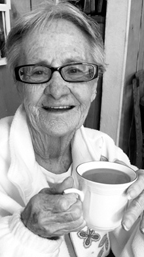After the Fact: Will you still need me when I’m 64?

Our high school yearbook, with photos that would do a passport proud, featured a print version of the angst-worn teenage popularity contest. At the beginning of each class section appeared a half-page photo of the “class favorites,” one guy and one girl posed in front of the faux fireplace in the home economics’ room. The bottom half of the page was given over to the class officers, less important but still more significant than the plebeians who made up the balance of that year’s class population.
After the classes marched through the pages, seniors down through (in our case) “sub-freshmen”, came miscellaneous candid shots of sports events and the always-featured team pictures. Of lesser interest were club membership pictures, irrelevant activities as Honor Society, Key Club (sponsored by Kiwanis International, I seem to recall), newspaper and yearbook staff, Candy Stripers (future nurses), art club, debate team and thespians, to name a few.
And last (drum roll, please) but not least, the “most likely to” choices, voted on by an undisclosed body of representatives or not-representatives. There was no real system of “checks and balances” that ruled the outcomes of these “offices” so, for all anyone really knew, the choices could have been made by the “eeny, meeny, miney, mo” selection process.
“Most likely to succeed” would, logically, have come from among members of the Honor Society but, remember, this was more a popularity thing than a prediction of great things to come. One year’s male success story didn’t net much more from breaking into a local business than he would have been paid to put groceries into a paper bag and he didn’t graduate from our high school.
The “cutest couple” seldom made it from picture-taking day through going to prom together and the “best dancers” weren’t speaking to one another, let alone dancing.
But the best part of having a high school (or college) yearbook is that you can dig it out after a class reunion to thumb through the pages and maybe figure out who that bald guy who stepped on your feet through one whole dance (it was supposed to be a “jitterbug”) is because he sure wasn’t “the best dancer” then or now. And you can draw a moustache on the “most attractive girl” because she has one now.
Some “competitions” were a bit more on the “up and up.” The homecoming queen was chosen by the men’s athletic membership (with probably a lot of “persuasion” from the team captains, the quarterback and the biggest guy on the football team) and the “Girls’ sweetheart” was voted into the pages of the yearbook by the ladies’ athletic association (where, if you understand women at all, you’d know NO amount of pressure would succeed in placing one candidate over another.)
Our yearbooks were “hardback” volumes: the elementary school version my great-grandkids have brought home are more a “magazine” format. The pictures aren’t much better but, at their ages, they haven’t yet grasped the concept of popularity. For the younger grades, girls still have “cooties” and boys are “yukky.” In a few years, they’ll graduate to the “punch in the arm” display of affection and then they’re off to junior high. I don’t know if they still have yearbooks, but I hope they haven’t changed too much. Where else are you going to get so many laughs from a book you’ve already read 25 years ago?



